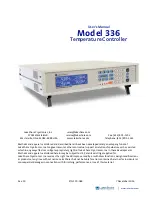
D-Link DWC-1000 User Manual
111
Section 4 - Advanced WLAN Configuration
Field
Description
Rate Limiting
Enabling multicast and broadcast rate limiting can improve overall network performance
by limiting the number of packets transmitted across the network. This feature is disabled
by default.
Note:
The available rate limit values are very low for most environments, so enabling this
feature is not recommended.
• To enable Multicast and Broadcast Rate Limiting, switch ON.
• To disable Multicast and Broadcast Rate Disabled, switch OFF.
Rate Limit
Enter the rate limit you want to set for multicast and broadcast traffic. The limit should
be greater than 1, but less than 50 packets per second. Any traffic that falls below this
rate limit will always conform to and be transmitted to the appropriate destination. The
default and maximum rate limit setting is 50 packets per second. This field is disabled if
Rate Limiting is disabled.
Rate Limit Burst
Setting a rate limit burst determines how much traffic bursts can be before all traffic
exceeds the rate limit. This burst limit allows intermittent bursts of traffic on a network
above the set rate limit.
The default and maximum rate limit burst setting is 75 packets per second. This field is
disabled if Rate Limiting is disabled.
Transmit Lifetime
Shows the number of milliseconds to wait before terminating attempts to transmit the
MSDU after the initial transmission.
Receive Lifetime
Shows the number of milliseconds to wait before terminating attempts to reassemble
the MMPDU or MSDU after the initial reception of a fragmented MMPDU or MSDU.
Station Isolation
When this option is selected, the AP blocks communication between wireless clients. It
still allows data traffic between its wireless clients and wired devices on the network, but
not among wireless clients. This feature is disabled by default.
Channel Bandwidth
The 802.11n specification allows the use of a 40‐MHz‐wide channel in addition to the
legacy 20‐MHz channel available with other modes. The 40‐MHz channel enables
higher data rates but leaves fewer channels available for use by other 2.4 GHz and 5 GHz
devices. The 40‐MHz option is enabled by default for 802.11a/n modes and 20 MHz for
802.11b/g/n modes. You can use this setting to restrict the use of the channel bandwidth
to a 20‐MHz channel.
Primary Channel
This setting is editable only when a channel is selected and the channel bandwidth is set
to 40 MHz. A 40‐MHz channel can be considered to consist of two 20‐MHz channels that
are contiguous in the frequency domain. These two 20‐MHz channels are often referred
to as the Primary and Secondary channels. The Primary Channel is used for 802.11n clients
that support only a 20‐MHz channel bandwidth and for legacy clients. Use this setting to
set the Primary Channel as the upper or lower 20‐MHz channel in the 40‐MHz band.
Protection
The protection feature contains rules to guarantee that 802.11 transmissions do not
cause interference with legacy stations or applications. By default, these protection
mechanisms are enabled (Auto). With protection enabled, protection mechanisms will be
invoked if legacy devices are within range of the AP. You can disable (Off) these protection
mechanisms; however, when 802.11n protection is off, legacy clients or APs within range
can be affected by 802.11n transmissions. 802.11 protection is also available when the
mode is 802.11b/g. When protection is enabled in this mode, it protects 802.11b clients
and APs from 802.11g transmissions.
















































